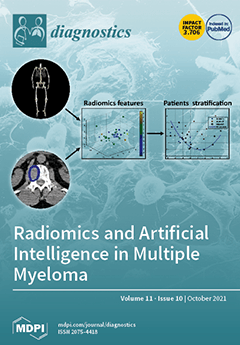Background. Peripheral fat tissue is known to positively influence bone health. However, evidence exists that the risk of non-vertebral fractures can be increased in postmenopausal women with obesity as compared to healthy controls. The role of sclerostin, the SOST gene protein product, and body composition in this condition is unknown.
Methods. We studied 28 severely obese premenopausal (age, 44.7 ± 3.9 years; BMI, 46.0 ± 4.2 kg/m
2) and 28 BMI-matched post-menopausal women (age, 55.5 ± 3.8 years; BMI, 46.1 ± 4.8 kg/m
2) thorough analysis of bone density (BMD) and body composition by dual X-ray absorptiometry (DXA), bone turnover markers, sclerostin serum concentration, glucose metabolism, and a panel of hormones relating to bone health.
Results. Postmenopausal women harbored increased levels of the bone turnover markers CTX and NTX, while sclerostin levels were non-significantly higher as compared to premenopausal women. There were no differences in somatotroph, thyroid and adrenal hormone across menopause. Values of lumbar spine BMD were comparable between groups. By contrast, menopause was associated with lower BMD values at the hip (
p < 0.001), femoral neck (
p < 0.0001), and total skeleton (
p < 0.005). In multivariate regression analysis, sclerostin was the strongest predictor of lumbar spine BMD (
p < 0.01), while menopausal status significantly predicted BMD at total hip (
p < 0.01), femoral neck (
p < 0.001) and total body (
p < 0.05). Finally, lean body mass emerged as the strongest predictor of total body BMD (
p < 0.01).
Conclusions. Our findings suggest a protective effect of obesity on lumbar spine and total body BMD at menopause possibly through mechanisms relating to lean body mass. Given the mild difference in sclerostin levels between pre- and postmenopausal women, its potential actions in obesity require further investigation.
Full article






